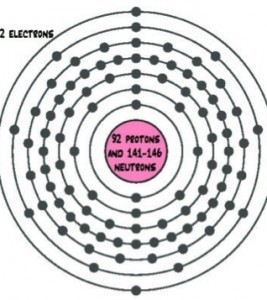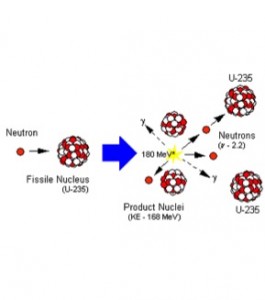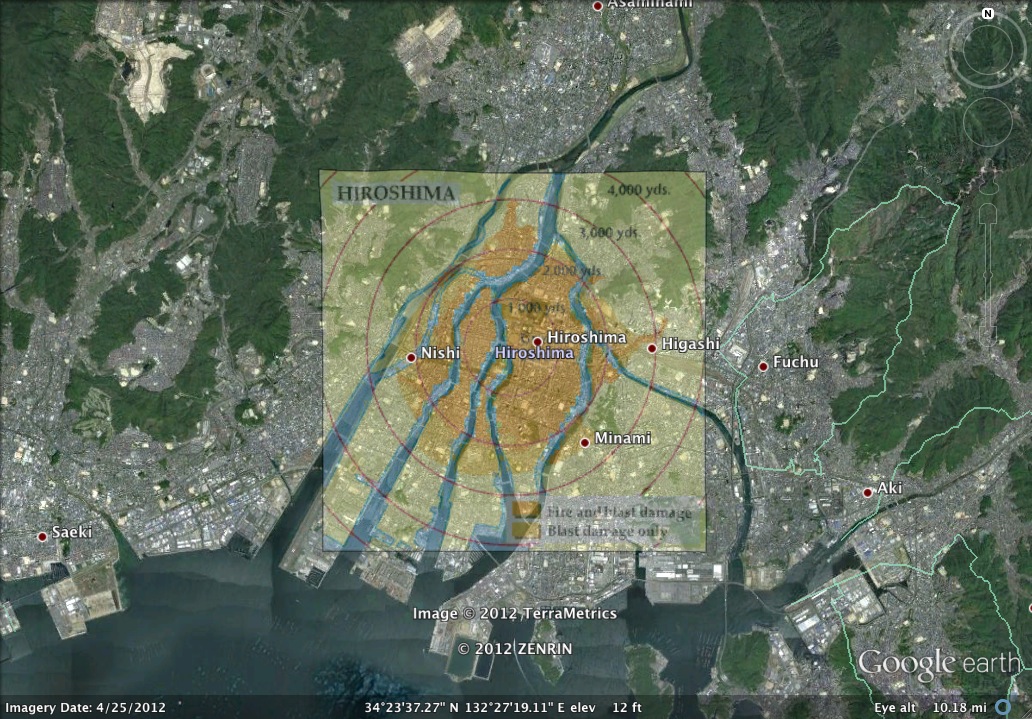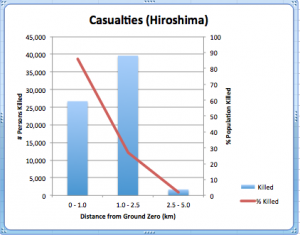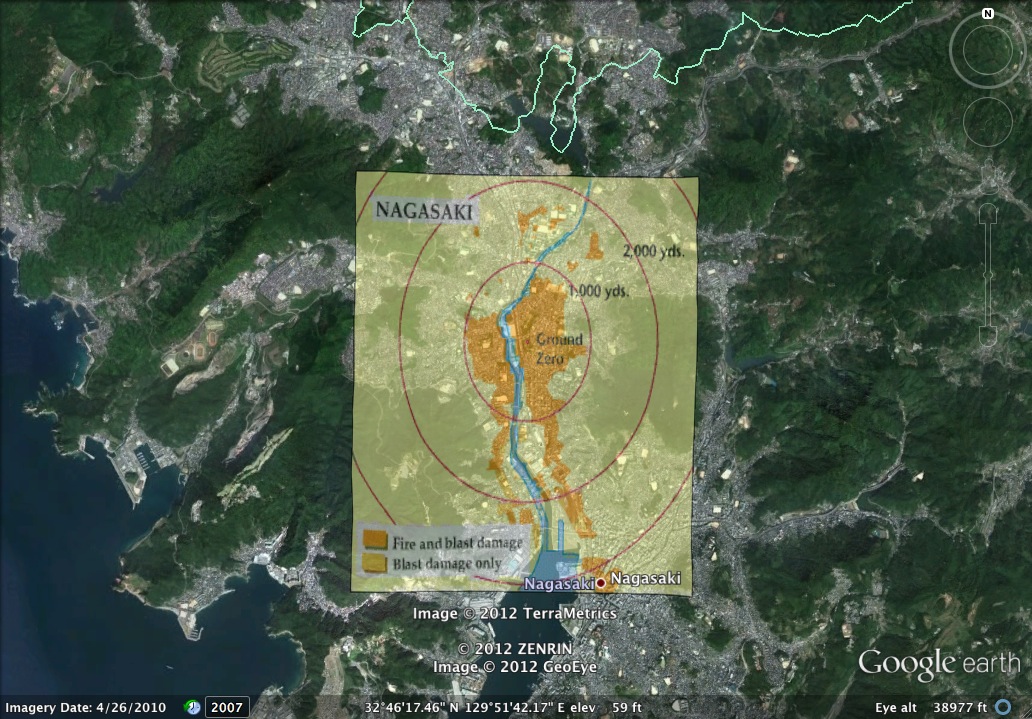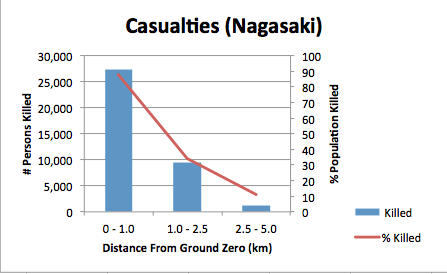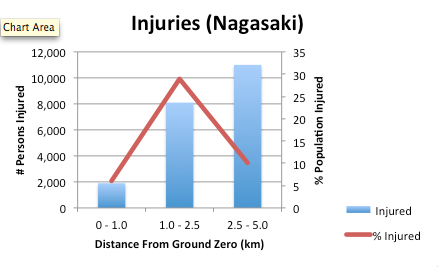Intro
The creation of the atomic bomb has changed history. The ability of physicists to achieve nuclear fission and create nuclear energy has provided both great benefit and great destruction to society. This project will go over the history behind the making of the atomic bonm- from the physics, to it’s development and testing, the first uses of the atomic bomb in Hiroshima and Nagasaki, and end by touching on the Treaty on the Non-Proliferation of Nuclear Weapons and the use of nuclear energy for the positive purpose of electricity.
Background in Physics: The Scientific Method Behind the Madness
The atom is the basic building block of everything. It is the smallest component of an element. Atoms consist of a nucleus- containing protons, neutrons, and electrons. The protons, neutrons, and electrons, are bound to the nucleus by electrical attraction. The type of element is determined by its atomic number, which refers to the number of protons in an atom.
The development of the atomic bomb revolved around the manipulation of the element uranium. Uranium is mined, just like coal and other metals. Of the known uranium resources throughout the world, Australia has triple the amount of uranium than any other country. Uranium consists of 92 protons and between 141 and 146 neutrons. This variation in atomic weights plays a great role in nuclear physics. The element uranium consists of 3 isotopes:
- Uranium-238 (U-238): Contains 92 protons and 146 neutrons (92+146=238). Over 99% of natural uranium is U-238
- U-235: Contains 92 protons and 143 neutrons – Less than 1% of natural uranium is U-235
- U-234 : Contains 92 protons and 142 neutrons – Found in trace amounts.
Nuclear Fission
Nuclear fission is the process of splitting the nucleus of an atom. Scientists discovered that splitting the nucleus of the U-235 atom could set off a chain reaction. The problem was that less than 1% of natural uranium is U-235. Using the fact that U-235 is lighter than U-238 (since it has 3 fewer neutrons), scientists were able to separate the two isotopes, creating “enriched” U-235. Uranium is unique in comparison to other elements in that its nuclei changed significantly, breaking into two separate pieces nearly equal in size, when bombarded with neutrons. This “enriched” U-235 was the building block scientists needed to create the atomic bomb. “Depleted uranium” (U-238 dislodged via the enrichment process) is used to make plutonium – another material that can be used to construct nuclear weapons.
The formulation of of the atomic bomb was accelerated by World War II. From Albert Einstein’s 1905 formula E=mc2, or energy equals mass times the square of the velocity of light, came the idea that vast amounts of energy could be released if atoms were split. Scientific work on nuclear fission took off in the 1930’s. Milestones in nuclear development include:
- 1933: Hungarian Leo Szilard realizes the possibility of the nuclear chain reaction
- 1934: Italian Enrico Fermi achieves the first nuclear fission
- 1939: Niels Bohr announces the discovery of fission and Albert Einstein writes to President Franklin Delano Roosevelt (FDR) about uranium as a potential source of energy – just 4 weeks later, WWII began
- 1941: Glenn Seaborg discovers plutonium, and FDR approves plans for the development of an atomic weapon.
Key Facilities: (Facilities stood in isolation and had extensive security requirements, material was moved between these facilities)
- Los Alamos, New Mexico: – Code named “Project Y” worked on bomb design and fabrication. Two types of bombs were developed – uranium and plutonium. The first atomic bomb testing, the “Trinity Test” conducted not far from this facility
- Oak Ridge, Tennessee: Area of about ninety-square-miles. There were three major production facilities/test sites, each called by a code name: 1. “Y-12” held an electromagnetic uranium enrichment test, 2. “L-25” was used for gaseous diffusion uranium enrichment test and production, code named “K-25”, and 3. “X-10” a Nuclear pile design facility
- Hanford, Washington: Area of almost one-half million acres. Plutonium production facility, code named “Site W”
The Trinity Test was the first ever test of a plutonium weapon, nicknamed “The Gadget”. It took place at 5:30 a.m. on Monday, July 16, 1945. over the southern New Mexico desert. The test was surprisingly successful, achieving the desired effect during the first attempt. The Gadget served as the model for the plutonium bomb used in the second bombing of Japan, called “Fat Man,” dropped in Nagasaki less than one month after the Trinity Test.
The test was code named “Trinity” by J. Robert Oppenheimer, one of the leading physicists on the project often referred to as the “father of the atomic bomb.” Inspiration for the name was derived from the poems of John Donne. Oppenheimer referred one of Donne’s sonnets, Holy Sonnet XIV, “Batter My Heart, Three-Person’d God.” He also referred to the poem, “Hymn to God, My God, in my Sickness.” An excerpt from this poem is given below:
As west and east
In all flat maps—and I am one—are one,
So death doth touch the resurrection.
Watch footage from the Trinity Test in an excerpt of the History Channel’s show “Modern Marvels” here.
First Use of Atomic Bomb: Ending World War II
On May 7, 1945 Germany surrendered, ending WWII in Europe. However, WWII continued in the Pacific as Japan refused to surrender. The fighting in Japan was horrific and brutal. The Japanese mentality was that surrender would be worse than defeat. They were prepared to fight until the death. With no end in sight, the United States had to weigh their options. If the U.S. was to invade Japan a lot of manpower would be required, and the number of casualties on both sides would be tremendous. The successful testing of “The Gadget” during the Trinity Test a month prior provide U.S. with another option. If the Japanese refused to surrender, the United States would detonate atomic weapons over Japan. While this was a hard decision to make, it was concluded that the number of casualties caused by an atomic bomb would be fewer than the number of potential casualties that would result from invasion. The United States dropped two bombs over the course of three days, the first in Hiroshima, and the second in Nagasaki.
Hiroshima
On August 6, 1945 a B-29 bomber named Enola Gay departed Tinian Island and flew 1,500 miles to Japan, targeting the military and communications center of Hiroshima. Enola Gay carried “Little Boy” – a 9,700 pound uranium bomb. At 8:15 a.m. “Little Boy” detonated about 1,900 feet above Hiroshima. The impact was so great that Enola Gay felt shockwaves from the blast over 11 miles away. Approximately 70,000 people were killed immediately, and 149,000 were dead by the end of 1945 from radiation sickness. In the subsequent five years tens of thousands more died. It is worthy to note here that the U.S. had not yet tested a uranium bomb, the only bomb tested had been made of plutonium.
The above map shows the extent of the damage cause by “Little Boy” geographically, from the point of impact (ground zero) and radially outward.
 I constructed these graphs using data from the AtomicArchive, using a primary axis to describe the numerical values or persons killed/injured, and a secondary axis to convey the percent of population killed/injured provides some interesting analysis. In the casualties graph, one is able to observe that at a 0-1 km distance from ground zero, nearly the entire population was wiped out. The further away from ground zero, the lower the percentage of the population that died. One may also notice the increase in the number of casualties/injuries occurring in the 1.0-2.5 km range in comparison to the 0-1 km range. This may be explained in part by the fact that the 1.0-2.5 km range covers a much larger area and in part by the fact that it’s further from ground zero.
I constructed these graphs using data from the AtomicArchive, using a primary axis to describe the numerical values or persons killed/injured, and a secondary axis to convey the percent of population killed/injured provides some interesting analysis. In the casualties graph, one is able to observe that at a 0-1 km distance from ground zero, nearly the entire population was wiped out. The further away from ground zero, the lower the percentage of the population that died. One may also notice the increase in the number of casualties/injuries occurring in the 1.0-2.5 km range in comparison to the 0-1 km range. This may be explained in part by the fact that the 1.0-2.5 km range covers a much larger area and in part by the fact that it’s further from ground zero.
Nagasaki
After the bombing of Hiroshima, Japan still had not surrendered. Three days later, on August 9, 1945, the United States dropped a second bomb, “Fat Man” – a 10,000 pound plutonium bomb. A bomber named Bock’s Car delivered the second bomb, once again departing from Tinian Island. At 11:01 a.m. “Fat Man” was detonated above Nagasaki. Approximately 40,000 people were killed immediately, injuring even more. In the following years the death rate climbed to a similar level as Hiroshima.
The above map shows the extend of the damage cause by “Big Man” geographically, from the point of impact (ground zero) and radially outward.
Data in these graphs were also taken from the Atomic Archive. Similar observations can be made based on these graphs in comparison to the graphs concerning Hiroshima. There is an inverse relationship between the number of casualties and the number of injuries. This is likely due to the fact that the further away from ground zero, the more people suffered injuries than died. Within one kilometer of ground zero, most people were dead so they couldn’t be counted as injured.
Conclusion
On August 14, 1945, five days after the bombing of Nagasaki, Japan finally surrendered. Without the development of the atomic bomb, WWII would have likely continued on for much longer and many more lives may have been lost. The technology produced in the development of the atomic bomb has been both a blessing and a curse. The dangers of nuclear weapons have been recognized worldwide, resulting in the Non-Proliferation Treaty (NPT). The NPT seeks to prevent the spread of nuclear weapons, the disarmament of existing nuclear weapons, and to promote peaceful uses of nuclear technology. The majority of countries have vowed to honor the NPT, but some have not. Fear still exists that certain countries continue to develop such weapons of mass destruction for future use.
Nuclear energy has it’s peaceful uses. Nuclear power plants provide a source of electricity needed that does not rely on resources, such as coal. While fewer countries contain nuclear power plants themselves, many of them are receivers of the electricity produced by these plants. While research in nuclear fission began for defense purposes, the technology established during the process has progressed to be used for peaceful civilian services, such as providing electricity to nations across the world. Without the making of the atomic bomb this technology may have never been discovered.
Preservation
Preservation of this data is based on idea of L.O.C.K.S.S. (Lots of copies keeps stuff safe). This project has already been set in a tangible form via blog. In addition, I have put together on my computer a folder of the images used (in multiple formats- .TIFF, .JPEG, .PNG, .GIF) in hopes that the files and file types will withstand the test of time. The textual portion of this presentation has been saved in a Word file as well. There are multiple copies of this folder – on my personal computer, external hard drive, a flash drive, in Google Dropbox, and an additional copy on another computer.
References
- Closing the Circle on the Splitting of the Atom. DOE. Washington, D.C. Department of Energy, January 1995.
- F.G. Gosling. The Manhattan Project: Making the Atomic Bomb. DOE. Washington, D.C.: Department of Energy, September 1994.
- http://www.atomicarchive.com/Maps/HiroshimaMap.shtml
- http://www.atomicarchive.com/Maps/NagasakiMap.shtml
- http://www.world-nuclear.org/info/inf75.html
- http://americanhistory.about.com/library/timelines/bltimelinemanhat.htm
- http://www.euronuclear.org/info/encyclopedia/n/nuclear-power-plant-world-wide.htm
- http://www.youtube.com/watch?v=Ru2PWmGIoB8
- http://www.cddc.vt.edu/host/atomic/trinity/trinity1.html

